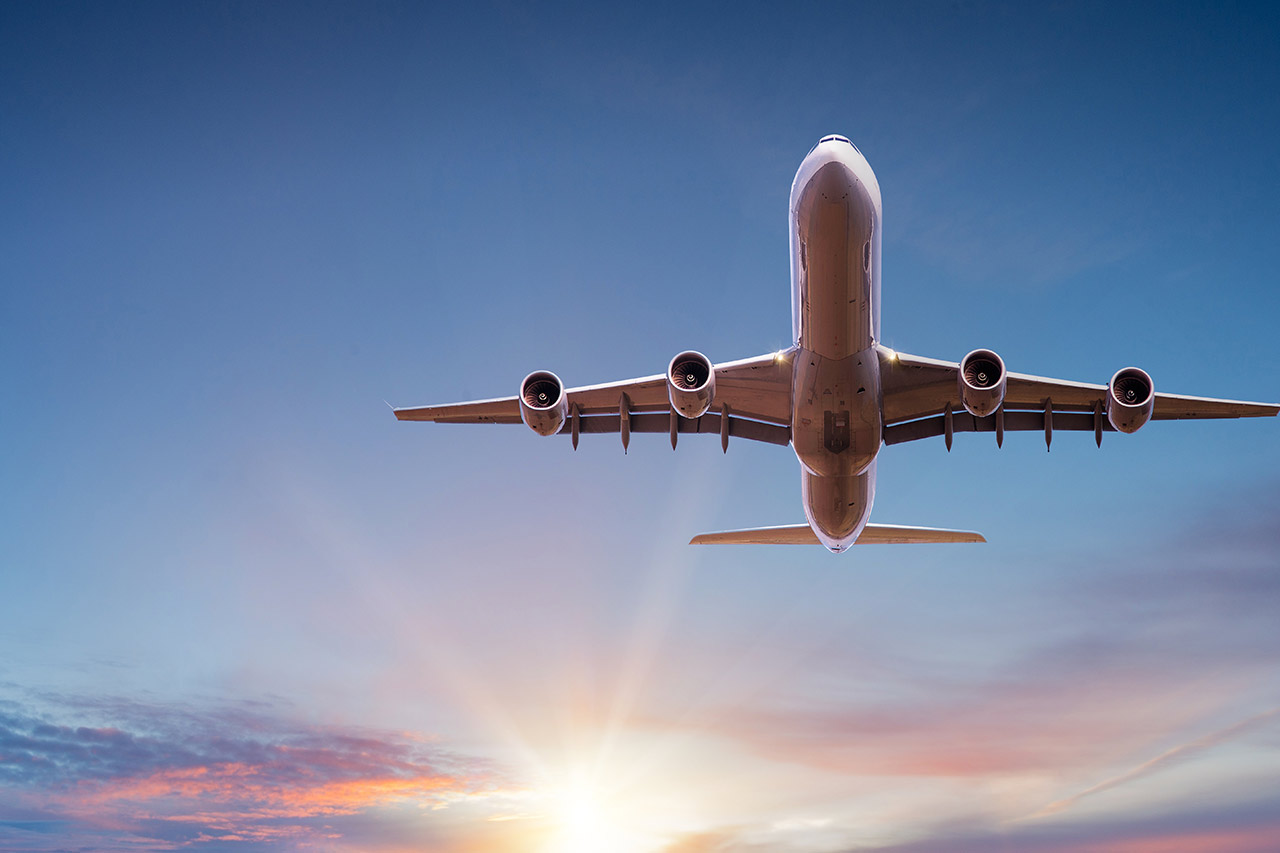In-flight connectivity: a major challenge for airlines

Alcimed, a consulting company specializing in innovation and the development of new markets, provides an update on the evolution of connectivity in aircrafts. Between the improvement of passengers’ experience and flight efficiency, connectivity is a key issue for airline companies.
In-flight connectivity has been a key issue in the aeronautics sector for the past two years. New services, with extremely varied applications, are emerging and represent opportunities both for airlines and for players outside the aeronautics industry.
In-flight connectivity and associated services
In-flight connectivity is currently undergoing strong development thanks to new technological means (improved satellite communication, Li-Fi[1], etc.) allowing a higher speed connection. But connectivity only makes sense in the context of the services it results in. Indeed, suppliers rely on connectivity to aggregate content in order to offer a range of software and services for both airlines and passengers.
Thehere are currently 4 types of services:
- IFEC[2] services (movies, series, music and in-flight internet) for passengers
- In-flight operation services for pilots
- Operational cabin improvement services for flight crews
- Real-time transmission of flight data to airline ground operations teams, in particular for maintenance purposes
Therefore, real opportunities for airlines exist within innovations around these four main types of services.
N.B.: The connectivity market in 2025: In 2025, 62% of the world fleet will be connected, representing more than $5.4 billion in passenger connectivity revenues, compared to $700 million in 2015. The annual growth of the connectivity market between 2015 and 2025 is estimated to be 23%. (Source: Euroconsult)
Towards improving the passenger experience and flight efficiency
Today the term in-flight connectivity is often associated with IFEC systems and improving the passenger experience. It is therefore an essential service for airlines to offer because it meets the need for continuity in passenger connectivity between the land and flight environments. Stakeholders, including connectivity providers, bandwidth providers and equipment manufacturers, have understood the importance of this trend and many are positioning themselves in this area. However, these services are now facing the limitations of bandwidth offered by satellites and the reluctance of passengers to pay for Internet access.
New business models are also emerging: “We are seeing more and more new business models. Jetblue, for example, offers free Wi-Fi to its passengers thanks to a partnership with Amazon.“, adds Alexandre Savin, Director of the Alcimed office in Toulouse.
In-flight connectivity also has another major benefit for airlines: improved efficiency and safety in flight. Numerous services for pilots are being developed to improve flight paths in real time, reduce fuel consumption or broadcast weather information. Examples include the French SMEs OpenAirlines and SafetyLine, which offer software to optimize fuel consumption. More recently, predictive maintenance solutions have also been developed to serve airlines’ ground operations teams, enabling them to reduce their operational costs and improve flight safety.
A chance for a “One stop shop” positioning
Due to a dense and complex ecosystem, a new opportunity has emerged to become a “One stop shop” to facilitate exchanges with airlines. From the aircraft manufacturer to tier 1 and 2 equipment manufacturers via maintenance contractors (MROs); all want to position themselves in this niche. Examples include Lufthansa Technik with its Aviatar platform, combining both digital and software services. Actors from avionics such as SitaOnAir or Arconics offer to connect the cockpit and cabin through digital service platform offers based on connectivity. Finally, equipment manufacturers such as General Electric also wish to establish themselves with offers dedicated to airline companies.
“The real challenge will be to be the first to offer a digital platform bringing together a set of services from different suppliers and to optimize their use by creating synergies “, adds Alexandre Savin.
But launching these platforms or “one stop shops” is not an easy task. It must be possible to define and implement packages of interest that take into account both the needs of users (passengers) and the expectations of airlines. These offers must be scalable and adapt to user demand. In addition, revenue models are very often inspired by the new models of the digital world, namely streaming offers and digital services in the form of monthly subscriptions, allowing airlines to keep their costs under control and this type of model is quite new in the field of aeronautics.
The aircraft connectivity market does not only attract players in the sector. In fact, Google, with its Google Flights platform, allowing passengers to book their flights in an optimal way via an optimized comparator, is making its first steps, but the American giant is already positioning itself as a future player in connectivity and aircraft services. For years, players such as Gogo, pure digital players, have been able to establish themselves on this market thanks to offers combining connectivity and software.
This market evolution thus represents an opportunity for the actors of the aeronautics industry but also for companies specialized in IT and digital applications, which have the necessary legitimacy to position themselves as a service aggregator.
[1] Li-Fi is a wireless communication technology that uses LED light
[2] IFEC : In-flight Entertainment and Connectivity